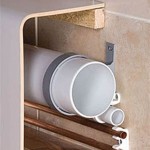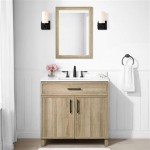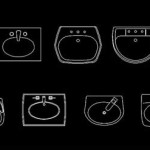Matching Bathroom Sink and Shower Faucets: A Comprehensive Guide
The selection of bathroom fixtures often involves a series of decisions that contribute to the overall aesthetic and functionality of the space. A key aspect of bathroom design is the coordination of faucets, particularly those for the sink and shower. Matching these fixtures is a common approach to achieve a cohesive and intentional look, but the best choice depends on a range of considerations, from style preferences to practical concerns.
This article provides a comprehensive guide to matching bathroom sink and shower faucets, exploring the various factors involved in the selection process and outlining different strategies for achieving a harmonious and visually appealing bathroom.
Achieving Cohesion Through Matching Styles
One of the primary reasons homeowners choose to match their sink and shower faucets is to create a sense of visual harmony. The overarching goal is to prevent a disjointed or haphazard appearance, which can detract from the overall design aesthetic. Matching styles contributes to a unified and balanced bathroom.
There are several style categories to consider when selecting faucets. These include traditional, modern, transitional, and industrial designs. Each category exhibits distinct characteristics that influence the overall look and feel of the bathroom. For example, traditional faucets often feature ornate details, curved spouts, and polished finishes like brushed nickel or oil-rubbed bronze. Modern faucets, on the other hand, tend to have clean lines, minimalist designs, and chrome or matte black finishes. Transitional faucets blend elements of both traditional and modern styles, offering a versatile option applicable to a wide variety of bathroom designs. Industrial-style faucets often incorporate exposed pipes, raw materials, and utilitarian designs, resulting in a edgy and functional aesthetic.
When matching styles, it is important to select faucets from the same design family or collection. Manufacturers often offer complete bathroom suites, including sink faucets, shower faucets, and other accessories, all designed to complement each other. Choosing fixtures from the same collection ensures consistency in design elements, such as the shape of the spout, the style of the handles, and the type of finish. This consistency makes the bathroom look well-planned and deliberate.
Consider the existing elements within the bathroom. The style of the vanity, the color of the tiles, and the overall architectural design should influence the choice of faucet style. A modern vanity with clean lines would pair well with modern faucets, while a vintage-style vanity might be better suited to traditional faucets. Taking these factors into account will lead to a more cohesive and visually appealing outcome.
Beyond the aesthetic considerations, it is also worth considering the functional aspects of different faucet styles. Some styles are easier to clean than others, and certain handle designs may be more ergonomic or suited to individuals with mobility issues. These practical considerations should be incorporated into the decision-making process to ensure that the chosen faucets are not only visually appealing, but also user-friendly.
Considering Finishes: A Key Aspect of Coordination
The finish of bathroom fixtures plays a significant role in the overall aesthetic of the space. Matching finishes between sink and shower faucets is a common way to create a coordinated look, but careful consideration should be given to the specific finish and its durability.
Several popular faucet finishes exist, each with its own unique characteristics. Chrome is a classic choice known for its durability and reflective shine. Brushed nickel offers a softer, more muted look that is resistant to fingerprints and water spots. Oil-rubbed bronze provides a warm, rich tone that is often associated with traditional and rustic designs. Matte black has become increasingly popular in recent years, offering a modern and sophisticated look. Gold finishes, such as polished brass or brushed gold, can add a touch of elegance and luxury to a bathroom.
When matching finishes, it is essential to consider the consistency of the color and texture between the sink and shower faucets. Even if both faucets are labeled as "brushed nickel," there can be subtle variations in the shade or sheen between different manufacturers or even different product lines from the same manufacturer. These subtle differences can be noticeable in a small space like a bathroom, so it is advisable to compare the faucets side-by-side before making a purchase. Purchasing faucets from the same manufacturer and product line greatly reduces the risk of mismatching finishes.
The durability of the finish is another important consideration. Some finishes are more resistant to scratches, corrosion, and water spots than others. Chrome, for example, is known for its exceptional durability and resistance to corrosion, making it a practical choice for high-use areas like the bathroom. Matte black finishes, while visually appealing, may be more prone to showing scratches and fingerprints. Oil-rubbed bronze finishes can develop a patina over time, which may be desirable for some homeowners but undesirable for others. Consider the level of maintenance required for each finish and choose one that aligns with your lifestyle and cleaning habits.
Consider the other metallic elements in the bathroom when selecting finishes. The finish of the faucets should complement the hardware on the vanity, the towel bars, and other accessories. For example, a bathroom with chrome faucets would typically feature chrome towel bars and vanity hardware. Mixing different metallic finishes can be done effectively, but it requires careful planning and an understanding of color theory. A common approach is to choose one dominant finish and use a contrasting finish as an accent. For example, a bathroom with brushed nickel faucets could incorporate matte black accents in the lighting fixtures or mirror frame.
Exploring Alternatives to Exact Matching: Intentional Contrast
While matching sink and shower faucets is a common approach, it is not the only option. Intentional contrast can be used to create a visually interesting and dynamic bathroom design. The key is to create contrast in a deliberate and thoughtful manner, ensuring that the different elements complement each other rather than clashing.
One way to create contrast is to use different finishes for the sink and shower faucets. For example, the sink faucet could be chrome, while the shower faucet is matte black. This creates a visual point of interest and can help to break up the monotony of a monochromatic color scheme. When mixing finishes, it is important to choose finishes that complement each other. Chrome and matte black, for example, are a classic combination that works well in many bathroom designs. Brushed nickel and oil-rubbed bronze can also be paired effectively, as can gold and chrome.
Another way to create contrast is to use different styles of faucets for the sink and shower. For example, the sink faucet could be a modern, minimalist design, while the shower faucet is a more traditional style. This can be a more challenging approach, as it requires a careful understanding of design principles and a keen eye for detail. It is important to ensure that the different styles do not clash with each other and that they are in harmony with the overall aesthetic of the bathroom. One way to achieve this is to use a common element, such as the finish, to tie the different styles together.
Consider the size and scale of the faucets when creating contrast. Using a larger, more substantial shower faucet and a smaller, more delicate sink faucet can create visual interest and balance. This approach can be particularly effective in smaller bathrooms, where it can help to create the illusion of more space.
It is important to consider the overall design concept of the bathroom when deciding whether to match or contrast the sink and shower faucets. A minimalist bathroom, for example, might benefit from a more uniform approach, with matching faucets and finishes. A more eclectic or maximalist bathroom, on the other hand, might be better suited to intentional contrast. Ultimately, the decision depends on personal preferences and the desired aesthetic.
The surrounding elements of the bathroom also have an impact on whether matching or contrasting finishes work best. A neutral-toned bathroom with white walls and minimal décor offers more flexibility in terms of faucet selection, allowing for either a matching or contrasting approach. A bathroom with bold colors, intricate tile work, or elaborate décor might benefit from a more streamlined approach, with matching faucets that blend seamlessly into the overall design.
In summary, the choice between matching or contrasting sink and shower faucets is a matter of personal preference and design considerations. Matching faucets offer a sense of cohesion and harmony, while contrasting faucets can add visual interest and personality. Regardless of the chosen approach, it is important to consider the style, finish, and scale of the faucets, as well as the overall design concept of the bathroom, to create a visually appealing and functional space.

See The Latest Trends In Bathroom Faucets Showers Tubs And More

How To Choose Bath And Shower Faucets Riverbend Home

How To Choose Bathroom Faucet Finishes Delta Blog

Bathroom Faucets Shower Fixtures By Improveit Home Remodeling

Belanger Quadrato Matte Black Bathroom Sink And Square Tub Shower Faucet Collection At Com
What To Match In Your Home S Interiors And Not Designed

6 Best Brands Of Luxury Bathroom Faucets An Expert Ysis

How To Choose Bathroom Faucet Finishes Delta Blog

4 Bathroom Faucet Finishes For Your Metropolitan Bath Tile

Should Bathroom Faucets Match Light Fixtures And Doorknobs Bathtubber
Related Posts







